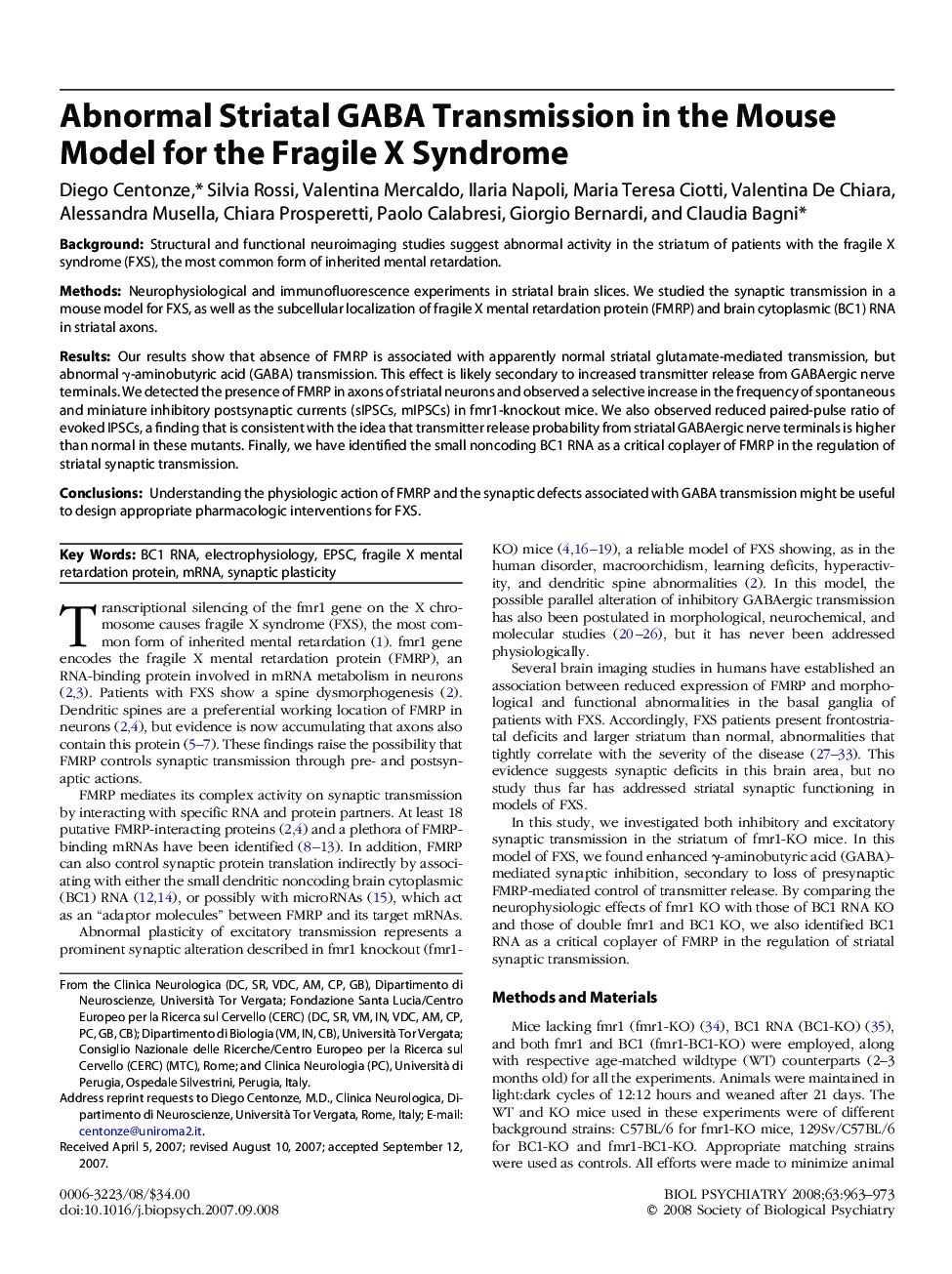| Article ID | Journal | Published Year | Pages | File Type |
|---|---|---|---|---|
| 4180182 | Biological Psychiatry | 2008 | 11 Pages |
BackgroundStructural and functional neuroimaging studies suggest abnormal activity in the striatum of patients with the fragile X syndrome (FXS), the most common form of inherited mental retardation.MethodsNeurophysiological and immunofluorescence experiments in striatal brain slices. We studied the synaptic transmission in a mouse model for FXS, as well as the subcellular localization of fragile X mental retardation protein (FMRP) and brain cytoplasmic (BC1) RNA in striatal axons.ResultsOur results show that absence of FMRP is associated with apparently normal striatal glutamate-mediated transmission, but abnormal γ-aminobutyric acid (GABA) transmission. This effect is likely secondary to increased transmitter release from GABAergic nerve terminals. We detected the presence of FMRP in axons of striatal neurons and observed a selective increase in the frequency of spontaneous and miniature inhibitory postsynaptic currents (sIPSCs, mIPSCs) in fmr1-knockout mice. We also observed reduced paired-pulse ratio of evoked IPSCs, a finding that is consistent with the idea that transmitter release probability from striatal GABAergic nerve terminals is higher than normal in these mutants. Finally, we have identified the small noncoding BC1 RNA as a critical coplayer of FMRP in the regulation of striatal synaptic transmission.ConclusionsUnderstanding the physiologic action of FMRP and the synaptic defects associated with GABA transmission might be useful to design appropriate pharmacologic interventions for FXS.
